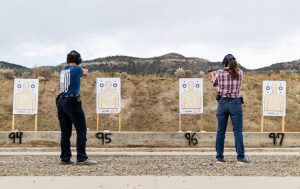Mark Cole
Samuel Chase of Maryland was born in 1743, the son of Rev. Thomas Chase, a learned Episcopal priest. His father naturally desired the highest educational attainment possible for his son, so Rev. Chase steadfastly tutored young Samuel in the classics.
Father and son were so successful in this endeavor that at the age of 18, Samuel Chase commenced the study of law in the office of several prominent Annapolis attorneys.
Upon entry to the bar a few years later, Chase’s life and career would move quickly. He was elected to the Maryland General Assembly in 1764 and became a leader of the independence movement – even though he was only 21. Moreover, attachment to the Crown remained strong in Maryland and young Chase definitely represented only a minority opinion.
Nonetheless, Chase continued to advance in his legal practice and in politics. In 1774, as a member of the Continental Congress, Chase joined the already elderly Benjamin Franklin and Charles Carroll, also of Maryland, on a diplomatic mission to Canada with the goal of inducing that country to sever ties with Great Britain and join a confederation of American colonies. Though they were not successful in their mission, the experience undoubtedly toughened up Chase for what was yet to come.
Chase continued to serve in the Continental Congress and in 1776, he went to Philadelphia to convene with the other delegates. But this meeting was different: though Chase and several other members of the Maryland delegation to Philadelphia had been at the forefront of the independence movement for a dozen years, in the summer of 1776, they had been legally forbidden from voting for independence.
Their hands were tied.
At best, Samuel Chase and the other members from Maryland could offer only moral support should a resolution for independence be put forward.
That is, until May, 1776, when the 33-year old Chase single-handedly undertook one of the most rigorous missions leading up to the Declaration of Independence.
Alone and on horseback, Chase left Philadelphia and returned to Maryland, traversed the province, called upon friends, allies, and colleagues, assembled numerous county meetings and slowly, meeting by meeting, one by one, persuaded the citizens of Maryland to send a message to the state convention (then meeting in Annapolis) that Maryland was ready for independence.
The people responded to Chase’s arguments, his tireless campaigning, and his massive organizational effort. The people’s representatives in the Maryland General Assembly in turn responded and sent Chase back to Philadelphia with instructions that the Maryland delegates to the Second Continental Congress were now allowed to vote for independence!
To get back to Philadelphia, Chase was in the saddle for two straight days, and one hundred fifty miles. Blessed, indeed, is the messenger who brings good news!
Chase arrived in Philadelphia on the very day that the resolution for independence was voted on: July 2, 1776.
Accordingly, Chase and the entire Maryland delegation were able to join the other colonies in voting for independence. And on July 4, 1776, Chase and the other Maryland delegates proudly joined in the Declaration of Independence.
Samuel Chase continued to serve in the Continental Congress until 1778, and in 1786 he moved to Baltimore, where he would remain for the rest of his life. He served in the Maryland court system until President Washington appointed him to the United States Supreme Court.
Chase’s tenure on the high court was not without turbulence, to say the least.
In retaliation for Justice Chase issuing what he believed to be politically charged opinions, President Thomas Jefferson had leaders of his party initiate impeachment proceedings against Justice Chase in the U.S. House in 1805.
Chase was impeached by the House and tried in the U.S. Senate. He remains the only Supreme Court Justice in U.S. history to be impeached.
Interestingly, Chase was defended in the Senate by Luther Martin, a man who definitely did not share Chase’s views. You see, Martin had been a delegate to the Constitutional Convention and had refused to sign the document, because unlike Chase (and like Jefferson), Martin believed in a weak federal government.
In any event, the Senate (which at that time included Senator John Quincy Adams from Massachusetts) acquitted Chase.
Jefferson’s bitter and partisan attack on the man who some 30 years before single-handedly found a way for Maryland to be part of Jefferson’s Declaration was thus thwarted. Chase continued his service on the U.S. Supreme Court for another five years, until he died in 1811.
Politics is a strange business. It makes friends out of enemies, and enemies out of friends.
But what is remarkable, in retrospect, is not that President Jefferson attacked Justice Chase late in life, seeing as Chase embodied all of the political opinions that Jefferson scorned. Men throughout history have always played rough in the political realm, for better and for worse.
Rather, the amazing and truly exceptional aspect of American history is that during the founding era, great men who would otherwise be at each other’s throats were able, at least momentarily, to set aside their own ambitions and their tendency to factionalize, all for the sake of the greater cause of American liberty.
Whatever good or evil they would do later in life, the fact remains that if great men like Chase and Jefferson (and many others) had not risen to the occasion during the founding era, America as we know it would not exist. 
That fact is a remarkable story that should be told and re-told and told again, so long as the fire of liberty burns in the chest of men. And so long as the story of American liberty is told, Samuel Chase of Maryland, that lone horseback campaigner of 1776, must be included as a major contributor.
Check out Mark’s book: Lives, Fortunes, Sacred Honor: The Men Who Signed the Declaration of Independence













